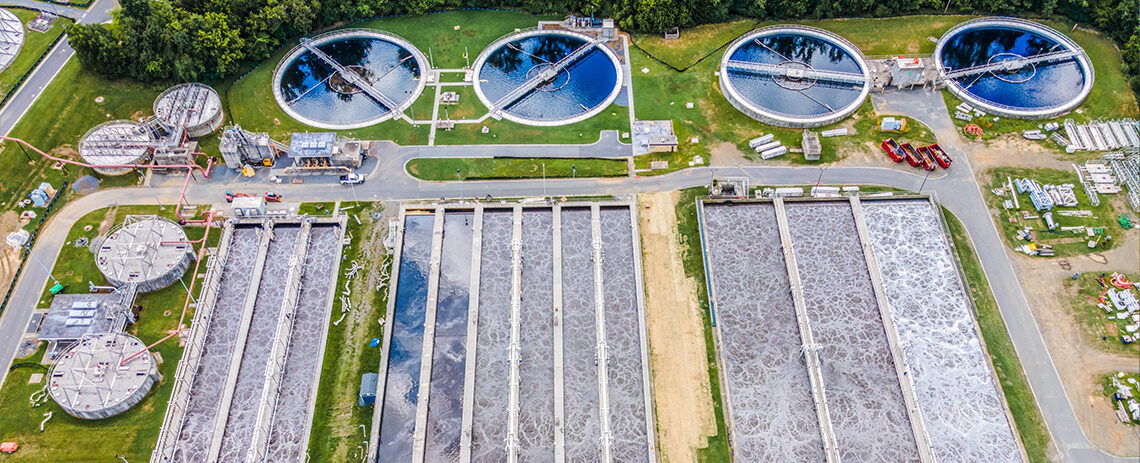Recognizing Wastewater Therapy Processes and Their Ecological Influence
The ins and outs of wastewater therapy processes play a critical duty in mitigating environmental difficulties related to water contamination. Each stage, from initial to advanced treatments, is designed to address specific impurities, eventually guarding both public health and wellness and water environments. Nonetheless, in spite of technological advancements in treatment effectiveness, significant challenges continue, including the management of residual pollutants and the ramifications of nutrient drainage. As we discover the complexities of these procedures, it comes to be crucial to wonder about exactly how much current techniques can progress to meet the expanding demands of sustainability and ecological conservation.
Introduction of Wastewater Therapy
Exactly how is wastewater transformed into a safe resource for the setting? Wastewater therapy is a critical process made to eliminate pollutants from utilized water, therefore securing public health and wellness and protecting communities. This process begins with the collection of wastewater from household, industrial, and commercial resources, which is then routed to therapy facilities.
At these centers, different physical, chemical, and biological approaches are employed to deal with the wastewater. Ultimately, organic therapies, such as activated sludge processes, utilize microorganisms to damage down natural issue.
The dealt with effluent can be safely released into natural water bodies or recycled for irrigation and industrial purposes, advertising resource conservation. Furthermore, the therapy process produces biosolids, which can be repurposed as plant foods or soil modifications, better boosting sustainability.
Phases of Therapy Processes
The wastewater treatment procedure typically consists of 3 main phases: preliminary, main, and secondary therapy. Each phase offers an unique role in decreasing the contaminant load and making certain the effluent meets ecological requirements prior to discharge.

The primary therapy phase concentrates on the physical splitting up of suspended solids from the wastewater. With sedimentation, larger fragments work out at the bottom of sedimentation containers, forming sludge, while lighter products, such as oils and oils, float to the surface and are skimmed. This procedure significantly reduces the organic and not natural lots in the wastewater.
Second treatment is a biological procedure targeted at further minimizing the concentration of organic issue. Various approaches, consisting of triggered sludge systems and trickling filters, make use of microorganisms to metabolize organic contaminants. This stage is important for accomplishing the necessary biochemical oxygen demand (BODY) decrease, eventually causing cleaner effluent prepared for discharge or further therapy. Each phase is critical in safeguarding environmental and public health and wellness.

Advanced Treatment Technologies
Complying with the second therapy processes, advanced therapy innovations play an important function in additional improving the high quality of dealt with wastewater. These modern technologies are designed to remove residual contaminants that are not efficiently eliminated throughout main and second therapies, guaranteeing the effluent fulfills rigorous governing requirements.
Among the widely made use of sophisticated therapy methods are membrane layer filtration, reverse osmosis, and advanced oxidation procedures. Membrane layer filtration, including microfiltration and ultrafiltration, works in separating great fragments, virus, and colloids from the water (Wastewater). Reverse osmosis makes use of semi-permeable membrane layers to eliminate dissolved solids, resulting in premium water suitable for numerous applications
Advanced oxidation procedures (AOPs) employ strong oxidants to weaken organic toxins, including drugs and personal treatment items that are immune to standard treatment. These techniques boost the biodegradability of complicated substances, facilitating their elimination.
One more significant technology is making use of biological nutrient elimination processes, which particularly target nitrogen and phosphorus, preventing eutrophication in getting water bodies. Overall, innovative therapy modern technologies are necessary for achieving greater degrees of purification, promoting water reuse, and protecting public health while dealing with the challenges related to wastewater administration.
Ecological Benefits of Treatment
Various ecological benefits develop from efficient wastewater treatment processes that add to ecosystem health and sustainability. Mainly, these procedures significantly reduce the release of damaging contaminants right into all-natural water bodies, which assists maintain marine communities. By removing pollutants such as heavy steels, nutrients, and microorganisms, dealt with wastewater mitigates the danger of waterborne illness and advertises biodiversity in you could try here marine atmospheres.
Additionally, wastewater treatment facilities usually utilize sophisticated technologies that enable water recycling and reuse. This practice not only conserves fresh water resources yet likewise decreases the need on all-natural water products. Improved view website nutrient elimination from wastewater can additionally stop eutrophication, a procedure that causes algal blossoms and subsequent oxygen depletion in water systems.
Additionally, reliable therapy procedures can reduce greenhouse gas exhausts, particularly methane and laughing gas, which are usually launched throughout unattended wastewater decomposition. By recording and using biogas from anaerobic digesters, centers can transform waste right into renewable power, consequently adding to a reduction in fossil gas reliance.
Difficulties and Future Trends
While the environmental advantages of wastewater therapy are clear, a number of challenges linger that hinder optimum results in this field. One major problem is aging facilities, which often brings about ineffectiveness and boosted functional costs - Wastewater. Several treatment plants were developed years ago, and their abilities do not align with contemporary needs, that include stricter regulative criteria and higher volumes of wastewater because of urbanization

Looking in advance, there is an expanding focus on resource recuperation and round economic climate concepts within wastewater treatment. Developments such as anaerobic food digestion, which can produce biogas, and progressed filtration technologies are gaining traction. These techniques not just improve therapy efficiency yet additionally promote sustainability.
Ultimately, addressing these challenges needs cooperation among stakeholders, investment in innovation, and a dedication to recurring study. By welcoming these patterns, the wastewater treatment Website field can progress to satisfy the needs of a changing environment and society.
Final Thought
In final thought, wastewater treatment procedures play a vital function in boosting ecological high quality and public health and wellness. The multi-stage therapy framework, coupled with innovative technologies, properly minimizes contamination and advertises lasting water management.